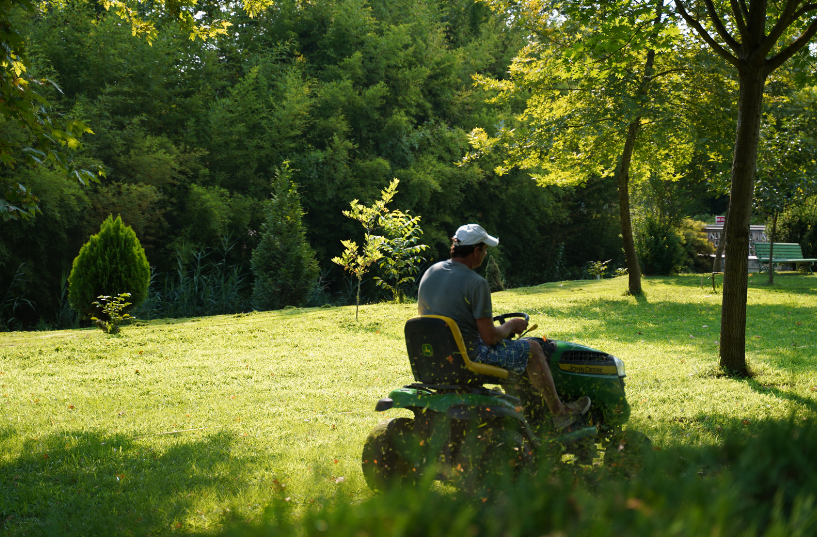Why Should I Fertilize My Lawn During the Fall?
The benefits of fertilizing your lawn in the spring might seem obvious. Grass that is coming out of dormancy will be hungry, and it needs plenty of energy to grow all spring and summer. Fertilizing in the fall, however, might seem like a waste of time. Why would grass need nutrients when it is about to turn brown and stop growing for several months?
There are actually several good reasons to fertilize in the fall. First, it allows your grass to come back earlier and healthier in the spring. By providing a consistent supply of nitrogen throughout the winter, fall fertilizer applications keep your lawn from being shocked by the huge influx of nitrogen it will receive in the spring. This prevents extravagant growth in the first part of spring, allowing your grass to instead grow consistently and predictably.
Fertilizer also gives your grass a healthy helping of potassium. Potassium promotes root growth and helps your grass’ root system retain water during the cold winter months. It also helps roots absorb the nitrogen and other nutrients they need, ensuring that your yard is simply dormant during the winter, not dead. Strong roots keep your grass firmly attached to the ground so that even a big ice melt won’t damage your lawn. Potassium also increases your lawn’s resistance to disease and the stress that the change in weather brings.
In addition to preparing your grass for winter, applying fertilizer in the fall helps your lawn recover from the stresses of summer. During the summer, your grass endures direct sun, heat, and often a good deal of foot traffic. All of these things can wear down its natural defenses. By feeding it in the fall, you are giving your lawn the hearty meal it needs to recover from the summer before it has to face the challenges of winter. It might even thank you by staying green for a few extra weeks!
To reap the benefits of a fall fertilizer application, we recommend applying your last fertilizer treatment of the year two or three weeks before the first frost date. In the Richmond area, the first frost occurs around October 19. The ideal time to fertilize is therefore late September or the first week of October.
A balanced fertilizer will always help, but there are also many fertilizers available that are specifically formulated for fall feedings. These provide high amounts of both nitrogen and potassium, and the nitrogen is in both quick and slow-release forms so that it lasts the entire winter. As with any fertilizer application, it is also important to give your lawn the proper amount of fertilizer and to apply it during favorable weather conditions.
If you need expert advice on the type and amount of fertilizer to use or best time to apply it, our lawn care professionals are here to help. All it takes to have healthy grass in the winter and greener grass in the spring is a phone call to the experts at
Richmond Landscaping Trimzi!
You might also like



